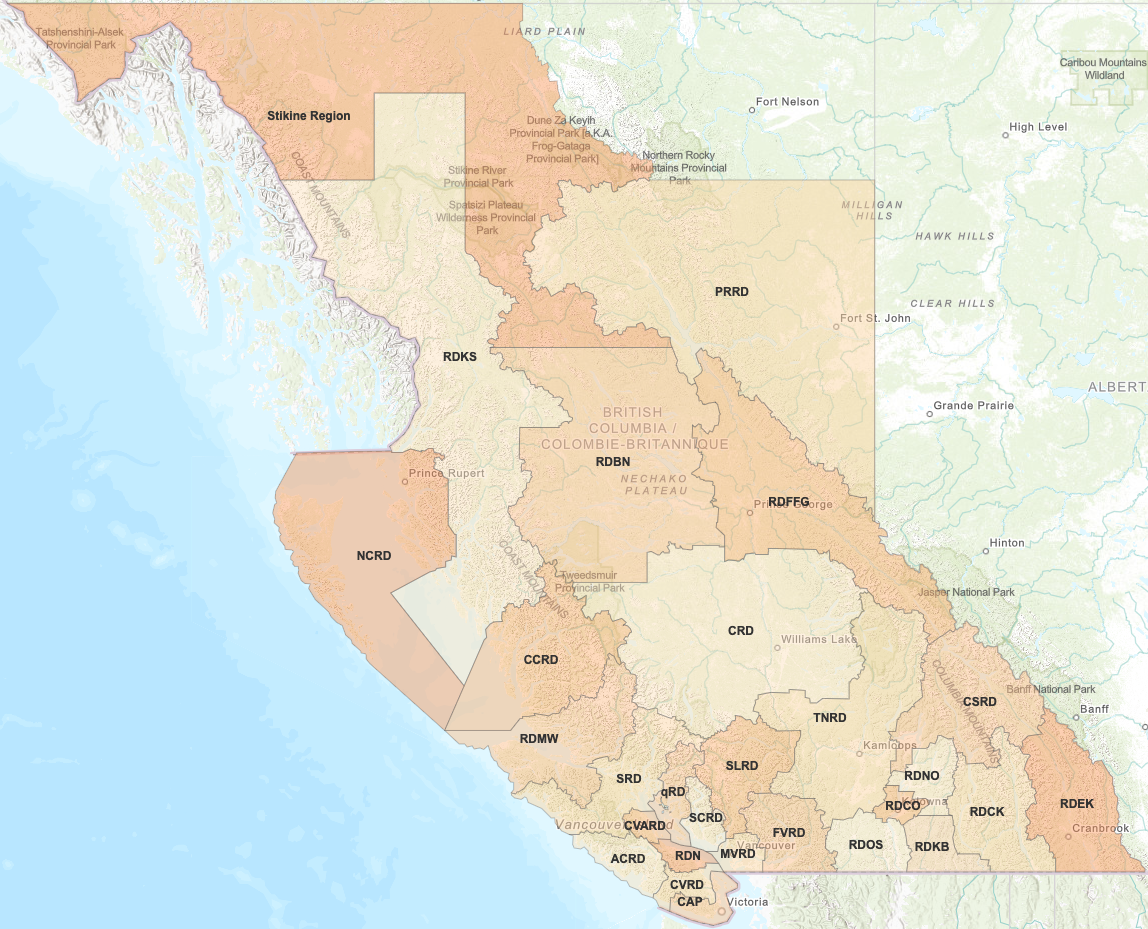Local government boundary changes
Boundary changes generally involve a combination of a boundary extension for one local government, and a reduction for another, whether the adjacent parties are municipalities, electoral areas, or regional districts. They may involve impacts to taxation, revenues, infrastructure and overall service provision by the local governments.
Boundary extension
Municipalities
As rural communities grow, residents may find they lack the local representation or services necessary to meet their needs. Nearby municipalities may also experience complex servicing, land use or development issues as a result of the growth in the outlying rural areas.
A municipal boundary extension can provide improved service coordination to a large area, more comprehensive land use planning, or more services and better representation to previously rural communities.
The Ministry of Housing and Municipal Affairs approach to municipal boundary extensions is guided by the following principles:
- Municipal leadership
- Inter-jurisdictional collaboration
- Consultation with those affected, including First Nations whose traditional territory encompasses the proposed area of extension
- Consistency with community sustainability objectives
- Provincial approval
Prior to forwarding a municipal boundary extension proposal to Cabinet, the minister responsible for local government must have evidence that the:
- Municipal council has requested the boundary extension
- Property owners and residents of the boundary extension area are aware of, and have been provided an opportunity to express their opinion on the proposed boundary extension; and
- A majority of municipal electors do not object to the proposed extension.
The Municipal Boundary Extension Policies Guide (PDF) describes provincial policies for working with local governments to develop and process municipal requests for boundary extensions.
Regional districts
Boundary extensions for an entire regional district are rare; however, an extension could occur if a neighbouring regional district was reduced in size, or if a regional district were to include territory from the provincially-administered Stikine Region in northwestern B.C. In such cases, a new electoral area would be created or an existing electoral area would also extend its boundary.
Boundary reduction
Municipalities
Municipal boundary reductions are rare, and can serve unique situations in specific communities. For example, a municipal road to a provincial park might be better served by the B.C government than by a small municipality.
Regional districts
Boundary reductions for an entire regional district are rare, and could occur if a neighbouring regional district was increased in size.
Boundary reductions are common for electoral areas when a municipality extends its boundaries into the outlying rural area. The size of one or more electoral areas may also be reduced if a First Nations treaty transfers Indian Reserve lands and Crown lands to a First Nation government.
Boundary redefinition
A boundary redefinition is a change when two or more adjoining municipalities, electoral areas, or regional districts make concurrent adjustments to their shared boundaries.
Elector approval is not required for redefinitions, as their scope is either minor or does not involve a change in local government jurisdiction. As examples, this might be suitable when a roadway adjoining two municipalities is realigned, or, when an electoral area experiences population decline, to ensure a balance of representation with higher population rural communities .
A municipal boundary redefinition—rather than the more robust process of a concurrent extension and reduction—can only occur in the following circumstances, the:
- Boundaries are uncertain
- Boundaries do not follow legal property boundaries
- Boundaries do not conform to those of an adjacent municipality
- Whole or part of a highway on or adjacent to the boundary should be included or excluded
- Whole or part of adjoining foreshore and any area below low water mark should be included or excluded
- Whole or part of the adjoining foreshore along a river, stream or lake, or the foreshore and land covered by water, should be included or excluded
- Land adjacent to and owned by the municipality should be included
Boundary change process
Learn more about the planning and process for boundary changes, and the role of the B.C. government.
Related Links
Contact information
Contact us if you have questions about local government boundary changes.
250 387-4020
1 800 663-7867

